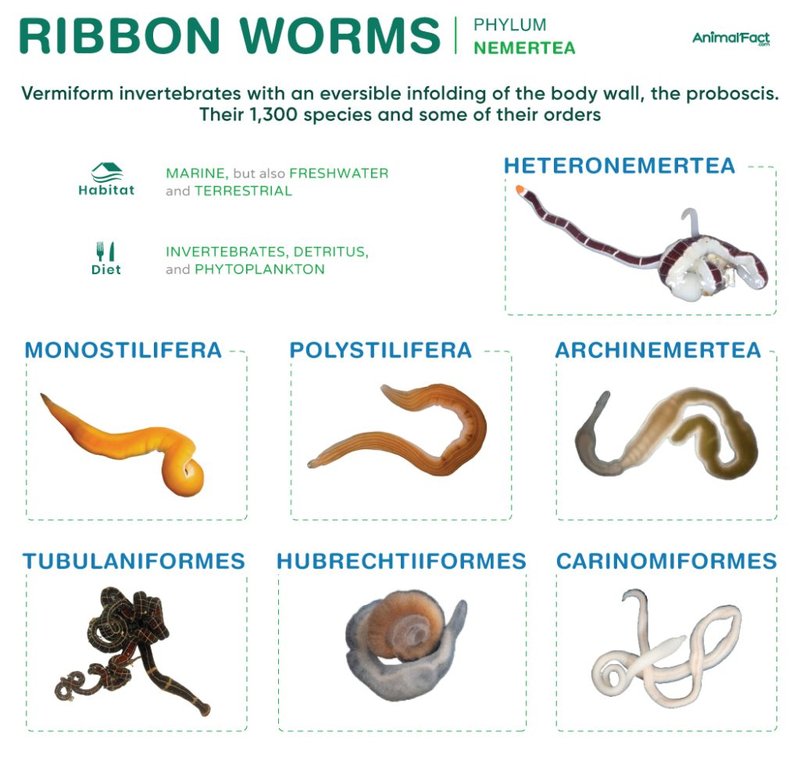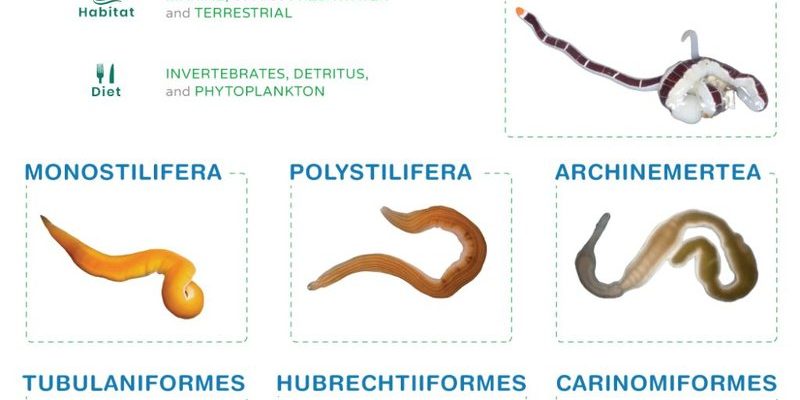
Belonging to the phylum Nemertea, ribbon worms exhibit a variety of species, especially along the stunning coastlines of the Pacific Northwest. They’re not your everyday sea critters; in fact, they have some unique features that make them pretty interesting. Imagine a creature that can stretch up to 30 feet long, yet is almost completely flat. That’s a ribbon worm for you—a real-life ribbon of life, swimming gracefully through its habitat.
In this article, we’ll dive deep into the world of ribbon worm species found in the Pacific Northwest. We’ll explore their habitats, behaviors, and roles within ecosystems, making it all easy to understand whether you’re a curious beachcomber or someone with a budding interest in marine biology.
What Are Ribbon Worms?
Ribbon worms are a group of invertebrate animals known for their elongated, flat bodies. With over 1,000 species described, these fascinating creatures can be found in various marine environments, from tidal pools to deep ocean floors. What sets them apart is their unique ability to extend and contract their bodies, allowing them to squirm through crevices and hunt for food.
You might be wondering how they eat. Ribbon worms have a special “proboscis” — think of it like a retractable tongue. They use it to capture prey, which mainly consists of small fish, crustaceans, and even other worms. This method of feeding is quite efficient. When the proboscis darts out and snags its meal, it retracts, pulling the prey into the worm’s mouth. It’s a bit like having a built-in fishing line that’s ready to go at a moment’s notice!
Most ribbon worms are marine, but some species live in brackish and freshwater. They play an important role in their ecosystems as predators and scavengers, helping to maintain the balance of marine life. They break down organic material, contributing to nutrient cycling, which is vital for the health of their aquatic homes.
Common Ribbon Worm Species in the Pacific Northwest
In the Pacific Northwest, you can find several species of ribbon worms, each with its unique characteristics. Here are a few noteworthy ones:
- Lineus longissimus: This is one of the longest ribbon worms, with some individuals reaching lengths of 30 feet or more. They are typically found in the intertidal zones and can be spotted in tide pools. Their length can be shocking, and they often look like a slimy, wiggly ribbon when they move.
- Cerebratulus fatiformis: Known for its distinctive yellowish coloration, this species prefers sandy or muddy substrates. It tends to be more robust than other species and can be seen burrowing into the sand, which makes it hard to spot.
- Nemertea species: This includes various unnamed or less commonly known species. They are often small and are less frequently studied, but they play a crucial role in their ecosystems.
Each of these species has adapted to thrive in specific conditions, showcasing the biodiversity present in the Pacific Northwest. Finding them can be a delightful surprise while exploring coastal areas.
Habitat and Distribution
Ribbon worms are versatile when it comes to their habitats. Most species prefer rocky shorelines, muddy areas, and tidal pools, where they can hide among rocks and seaweed. You might spot them during low tide when they come out to explore their surroundings.
Their distribution in the Pacific Northwest is quite widespread, making them fairly easy to find if you know where to look. From British Columbia down to Northern California, these worms can live in diverse environments, adapting to the conditions they encounter.
**Tidal Pools**: These are prime locations for spotting ribbon worms. During low tide, you can gently scour the pools, looking for their elongated bodies. The pools provide a rich environment filled with potential food sources, making it a prime spot for ribbon worms to thrive.
**Soft Substrates**: Many ribbon worms prefer sandy or muddy areas where they can burrow. This helps them avoid predators and ambush their prey. If you dig gently in these areas, you may uncover hidden ribbon worms going about their daily business.
Behavior and Feeding Habits
Ribbon worms are fascinating not just in their appearance but also in their behavior. They’re mostly **active predators**, using their proboscis to snatch unsuspecting prey.
Their hunting method is quite efficient, and it has a bit of drama if you’re lucky enough to observe it. Imagine watching a ribbon worm lying still, then suddenly, that long, stretchy tongue shoots out, capturing a small fish or a crustacean. It’s like a scene from a nature documentary unfolding right in front of you!
Ribbon worms also exhibit a unique strategy when it comes to avoiding predators. Their ability to produce a sticky substance allows them to escape quickly when threatened. This slime can deter potential threats, giving them a chance to wiggle away to safety.
Honestly, it’s this combination of hunting prowess and the ability to slip away that makes ribbon worms such remarkable creatures in the marine food chain. They’re not just surviving; they’re thriving!
Importance in the Ecosystem
Ribbon worms may seem like small players in the grand scheme of marine life, but they actually play a significant role in their ecosystems. As predators, they help control the population of smaller marine animals, contributing to the balance of the food web.
Additionally, ribbon worms are scavengers. They break down organic matter, recycling nutrients back into the ecosystem, which supports the growth of various plant and animal life. This nutrient cycling is essential for maintaining healthy marine environments.
By being a part of the ecosystem’s intricate web, ribbon worms also serve as food for larger creatures. Fish, birds, and even some marine mammals rely on them as a food source. So, when you consider ribbon worms, you’re looking at a vital component of ocean health that often goes unnoticed.
Conservation and Threats
Like many marine species, ribbon worms face various threats that can impact their populations. Habitat destruction due to **coastal development**, pollution, and climate change pose significant risks. These factors can lead to declining food sources and suitable habitats needed for survival.
Conservation efforts are essential to ensure that ribbon worms and their habitats remain intact. Protecting coastal environments, reducing pollution, and advocating for sustainable practices can help maintain healthy ecosystems.
You may wonder how you can help. Simple actions like participating in beach clean-ups, reducing plastic use, and supporting local conservation efforts can make a difference. Every small effort contributes to protecting these hidden gems of the Pacific Northwest.
How to Spot Ribbon Worms
If you’re eager to go out and find ribbon worms, here’s a simple guide to help you spot them:
1. **Visit Tidal Pools**: Schedule your trips during low tide when these pools are easily accessible. Look for movement or the unmistakable shiny surface of ribbon worms.
2. **Check under Rocks**: Gently lift rocks and seaweed along the shoreline. Ribbon worms often hide in these spots for safety.
3. **Dig in Soft Sand or Mud**: If you find a sandy area, dig carefully without disturbing too much. You might uncover some hiding ribbon worms who are just waiting for the right moment to make their appearance.
4. **Observe from a Distance**: If you spot one, try to observe it without touching. Watching their behavior, especially the way they capture prey, can be a thrilling experience.
Finding these fascinating creatures can deepen your appreciation for marine life. It’s like uncovering hidden treasures that contribute to the ocean’s beauty.
Ribbon worms may not be the stars of the underwater world, but they certainly are remarkable in their own right. Their unique adaptations, important roles in the ecosystem, and the sheer diversity of species make them worth knowing about. So, whether you’re wandering the shores of the Pacific Northwest or learning from afar, keep an eye out for these captivating creatures.
By understanding and appreciating ribbon worms, we can contribute to preserving the delicate balance of marine ecosystems. The next time you’re by the water, remember that even the slimiest of creatures play a vital role in the grand tapestry of life beneath the waves.

